This post is part of a larger deep dive
Curious about the role of psychopathy and the Oedipus Complex in The Cell? Check out The Cell Explained!
Or read the full The Cell article!
This post is part of a larger deep dive
Curious about the role of psychopathy and the Oedipus Complex in The Cell? Check out The Cell Explained!
Or read the full The Cell article!
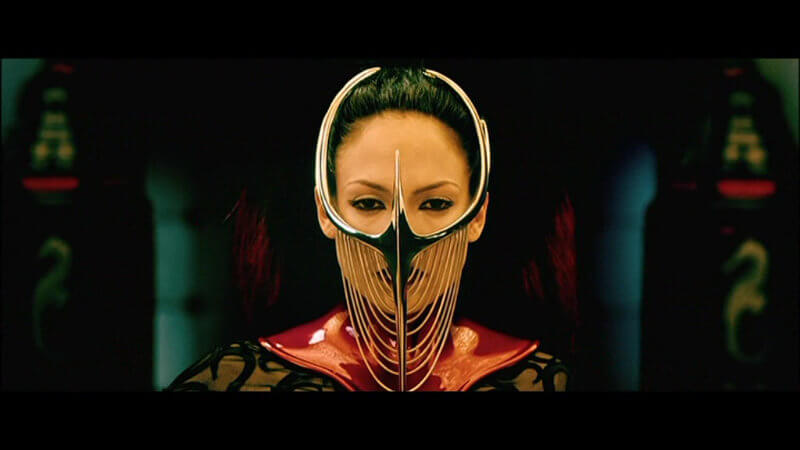
Clearly, the most fascinating and weirdest parts of the film are the contents of Carl’s psyche. So, in this analysis, I will try to make sense of some of the imagery and concepts that relate to those contents.
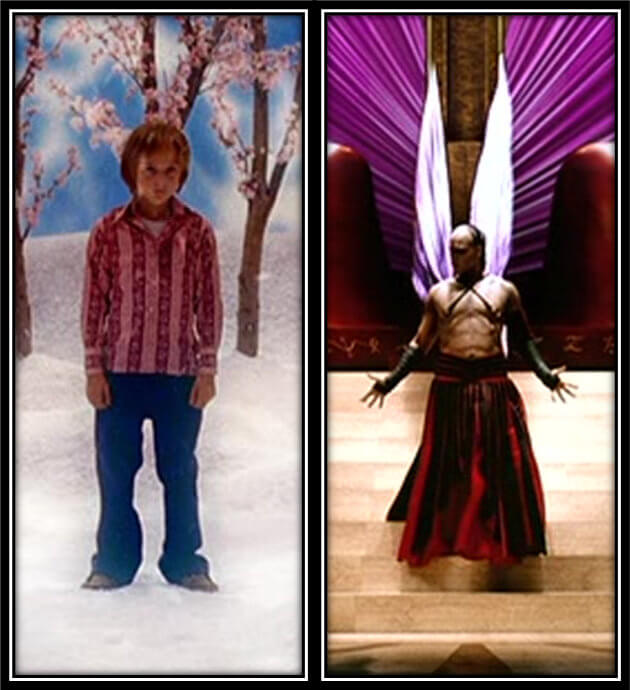
From her meanderings in Carl’s psyche, Catherine comes to the conclusion that Carl’s mind is split into two distinct entities:
1) King Stargher
This is Carl’s idealised version of himself. Carl portrays himself as a domineering king in a kingdom where he is free to indulge in all sorts of perversions.
King Stargher is clearly the predominant part of Carl’s psyche, permeating almost every corner of his unconscious.
2) Young Stargher
Here, he sees himself as an innocent child, who is a victim of the life circumstances.
Young Stargher occupies a much smaller fraction in Carl’s psyche than King Stargher.
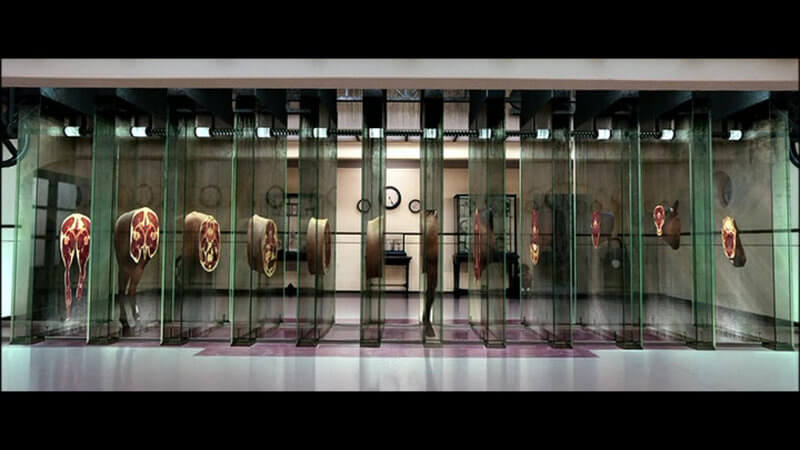
Note how Young Stargher is always on the run from King Stargher, always afraid of getting caught. Several traps are set up to catch Young Stargher (e.g., the blades that cut the horse).
Catherine’s insight is that the innocent part of Carl’s psyche, is still available to communicate, but it is at great peril of vanishing. Her idea is to try to reason with Young Stargher and cajole him into revealing the whereabouts of Carl’s latest victim.
So Young Stargher represents the part of Carl’s mind that shows remorse and is aware of the pain he has caused.

It isn’t entirely clear what caused the split King Stargher/Young Stargher.
In the film, it is revealed that Carl possesses a very rare and severe form of schizophrenia called Whalens infraction. This (fictional) ailment is caused by a virus that attacks the neurological system of the baby in uteru. It lays dormant, but when the individual has some kind of trauma, the virus deteriorates the brain very quickly, and there are no medication to halt the progress of the disease.
The neurologist explains that the trigger is in most cases water-related. So, the trauma of the baptism activated the virus, which started degenerating Carl’s brain.
After the baptism incident, Carl began hearing voices, an imaginary friend who helped him and gave him advice. This imaginary friend will later become the voice behind the serial killings perpetrated by Carl.
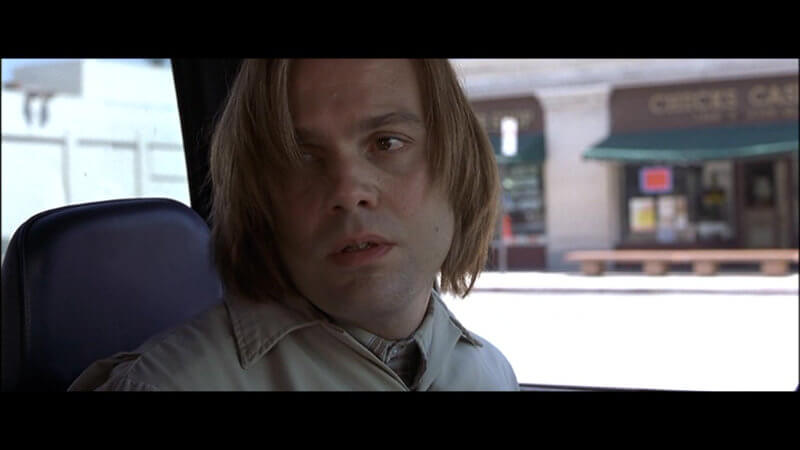
As we learned in the section Influence of the environment in psychopathy, child psychiatrist John Bowlby suggested that caregivers should allow the formation of a secure base in their children, so that they can go on and develop a healthy personality.
If children don’t possess that secure base, they might end up with an anxious/insecure or disorganised attachment pattern. Children with these types of attachment are more likely to develop serious issues later in adulthood, such as engaging in delinquency, being violent, lacking empathy, developing a depression or even becoming psychotic.
It will come as no surprise that Carl’s familiar environment was hardly conducive to a secure attachment pattern.
Had Carl participated in Ainsworth “Stranger Situation” experiment, I bet he would exhibit a very insecure attachment type, thus putting him at a much higher risk of becoming a psychopath.
Indeed, research suggests that if a child has experienced the sort of physical and emotional maltreatment that Carl experienced, he/she would be at a great peril of developing psychopathic traits. That means showing violent and impulsive behaviour, deliquency, no remorse for crimes they commit, lack of empathy for the victims, etc.
If you have read the section Mentalization, then you will be familiar with the idea that psychopaths exhibit a complete dissociation from their feelings, such that they do not usually feel empathy.
So the torture Carl applies is done with complete emotional detachment; Carl simply doesn’t empathise with his victims’ suffering, because his ability to mentalise has been seriously compromised.
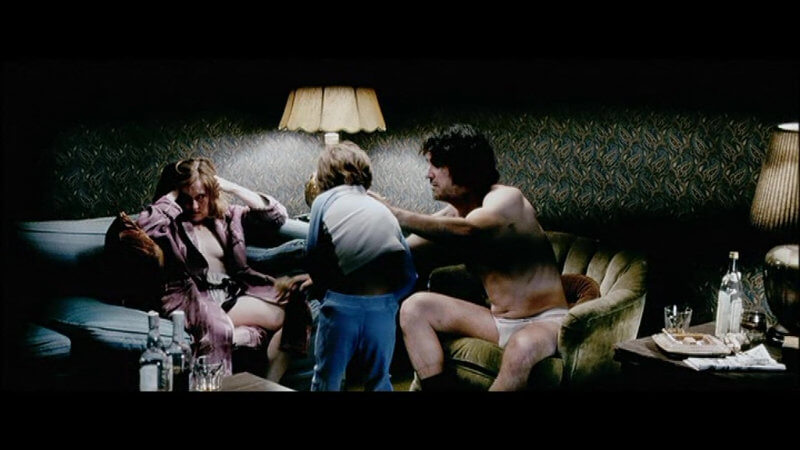
Carl obviously suffered from maternal neglect.
His mother most likely was unable to cope with an abusive husband and may have been left when Carl was still very young. The only information Carl has of his mother comes from his father, who doesn’t spare in humiliating and denigrating her in front of Carl.
Carl’s father also brought home girlfriends (or prostitutes) who never stood up to his bullying.
For example, there was an incident in which one of his father’s girlfriends gave Carl a doll. His father flipped out and said that dolls are not for boys. When the woman tried to intervene, Carl’s father yelled at her saying she is not Carl’s mother and that his actual mother left them. He also points to the vagina of his female acquaintance and refers to it as a “place of evil and death”.
Now, these events seem pivotal in having shaped Carl’s mind about the opposite sex. Carl grew up internalising his father’s views and opinions about women.
In addition, Carl’s image of a motherly figure has been seriously desecrated. Carl probably hates her mother for abandoning him and leaving him at the mercy of his abusive father.
As mentioned above, Carl’s lack of any maternal affection and internalisation of his father’s mysognistic views, has shaped Carl’s image of women as debased prostitutes. In Carl’s mind, all women are “dirty”, and views them as the epitome of debauchery.

This is clear when Catherine enters Carl’s mind for the very first time. She sees Carl’s actual six victims (including the muscled woman), each inside their own cubicle. The women are tied up, gagged or turned into marionettes or slaves.
They all look like dolls, whose faces resemble the dolls the FBI found in the raid to Carl’s basement (women bodies with skull heads, bird heads, or defaced).
In a way, maybe that’s what the ritual is all about. It’s Carl’s sick idea of purifying women.

Also, after taking his victims to his house and turning them all into dolls, Carl makes them collar and attaches it to the corpses of his dead victims. As Special Agent Gordon Ramsey says, the collar makes Carl feel that the women belong to them.
That’s why he feels turned on when he has them drowned and turned into dolls – Carl’s purification ritual. There is a scene in which we see him masturbating while suspended above one of his victims dead body.
But what’s with the perversion with dolls?
We know from Carl’s memories that he has a very defiled image of women: his mother left and his father’s girlfriends allowed his father’s abuse. He probably has not have any female friends or girlfriends, and doesn’t know how to engage with women in daily life.
However, with dolls, he is able to create his own image of a women – as he had been doing since his early childhood. With his dolls he idealises being in control and possessing women.

Somewhat paradoxically, the absence of a motherly figure has left a hole that Carl is unconsciously trying to fill.
When Catherine enters Carl’s mind for the first time, she sees the victims looking all like dolls and tied up in their own private cubicles. One is surrounded by men’s suits, another at the dentist, another pushing a pram. It’s as if Carl wants to have the women around, but seems somehow unable to imagine appropriate episodes involving them.
So, perhaps, Carl’s mind is, unconsciously, trying to compensate for the complete lack of maternal affection. That would surely fit the Oedipus complex that I discussed above.
Psychoanalyists argue that when children are victims of maternal neglect, they will constantly seek women that resemble their mothers to fill up the hole left by the absent mother.
Maybe the split we discussed above (King Stargher vs Young Stargher) reflects the dichotomy between (1) the idea that all women are whores and the wish to dominate them (King Stargher) and (2) the search for a motherly figure that could ease the emotional pain Carl experiences (Young Stargher).
The conflation of these two mindsets is so confusing, that it results in weird and deranged ideas about the opposite sex.
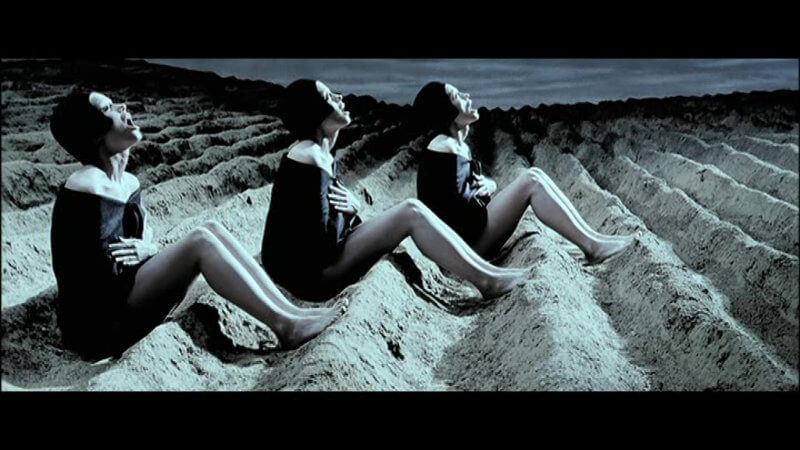
And this confusion is clearly illustrated during the scene with the three women staring at the sky with their mouths open. They say:
Mother One: Have you seen him? My boy? My little one? His father took him from me.
Mother Two: So I spit him out my hole, big deal. Don’t mean anything.
Mother Three: My child is an abomination. He is damned. He has no soul.
Note how the three mothers show completely different sentiments. Mother One sounds like she cares about and is looking for Carl. Mother Two sounds like she simply doesn’t care, whereas Mother Three is downright emotionally abusive.
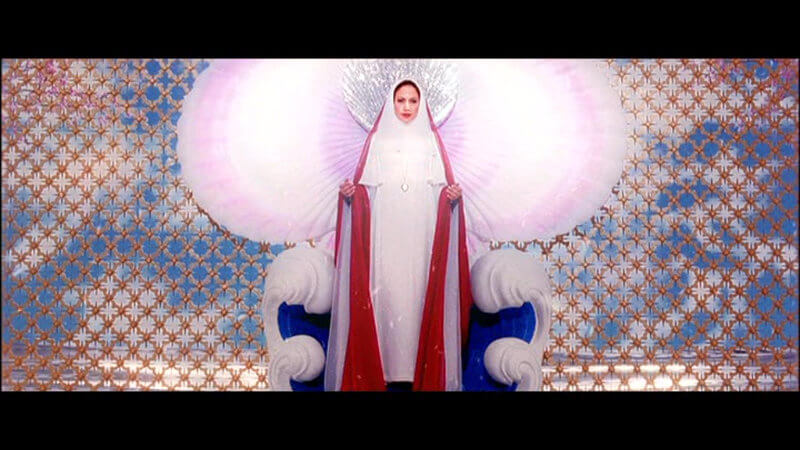
Catherine realising that Carl’s image of a mother is completely twisted, she resorts to the strategy of adopting the figure of a kind of “Virgin Mary” – purity in its highest form. Her idea is to counteract Carl’s perverse ideas that women are all “whores”.
She succeeds in bringing Carl closer to her, and even manages to communicate with him.
However, in the end, Catherine accepts to drown Young Stargher at his request.
Why?
As it turns out, water is the link that binds everything together.

Water plays a significant role in this film. Consider the following scenes:
1) Carl had a terrifying baptism experience when he was six years old. His father forcibly pushed him under water, triggering a seizure and marking the onset of Carl’s schizophrenia.
2) As a means of torture, Carl puts other women in a locked chamber (the cell) which slowly fills up with water, with the intent of drowning them.
3) Catherine immediately notes that Carl used to suspend himself on chains with steel rings attached to his back. That gives him the sensation of weightlessness, similar to what one experiences under water.
4) When Young Stargher encounters Catherine as the Virgin Mary, he tells her the story of finding an injured bird. Carl thought that once his father found out that he had it, he would do something horrible to the bird. In order to save the bird from a more tragic death, Carl decided to drown the bird in the sink.
5) In the end, Catherine holds Young Stargher under water until he drowns, killing Carl in real life.
It’s never made explicit in the film but I believe that these pieces of information are all linked, and the common thread is obvious: water.

Water is a pervasive feature in all dream scenery, and I think this is very meaningful for the analysis of the film.
As explained above, Carl believes drowning women will purify them. In his head, just as he was taught that baptism represents the cleansing from sin, so does his ritual with water represent the purification of women.
Note the “identification with the aggressor” that we discussed above in action. Even though Carl was traumatised by his baptism experience, he still has his victims go through the similar terrifying experience of drowning. Carl is using the tools from his aggressor to be able to quell anxiety and feel in control (a change from submissive to domineering, which is typical of people with “identification with the aggressor”).
Carl actually mentions this to Catherine, when she says that Carl’s father was evil and treated Carl as a thing, to which Carl responds, “No, he was… more powerful than me”.
Remember, identification with the aggressor is a coping mechanism that allows you to shift from being submissive to being in a position of dominance.
Carl apparently does not see his father’s actions as evil and wrong, but simply the result of being more powerful than Carl is. Thus, the idea of subjugating women (by kidnapping, drowning and turning them into dolls) is what makes Carl feel powerful, feel that he is in control.
The same applies to the drowning of the bird. Carl mentions to Virgin Mary that he saved the bird by drowning it. This was likely the first experience that made Carl feel he was in control. Even though the bird died, Carl felt it was the most appropriate course of action, as he saved the bird from a much more atrocious fate at the hands of his father.
So, in Carl’s mind, water has a double function of being both the bringer of death and a kind of salvation tool. And this is very much true in relation to Carl himself.

One question that might have bothered you is: why did Catherine accept to drown Young Stargher? Why not simply kill King Stargher?
Well, Young Stargher is as much Carl as King Stargher is, so if Catherine kills the one, the other will inevitably die as well.
Even though Catherine had successfully injured King Stargher, she was unable to kill him. When Catherine pierces a sword into King Stargher, he says that it isn’t real, that he is a God and she cannot kill him.
You have to remember that Carl is inside Catherine’s mind at this point. Any “physical” injury that Catherine inflicts in Carl in her mind isn’t an actual injury in Carl’s physical body.
Tipped by Young Stargher (with the story of the bird), Catherine realises the only way to end Carl’s madness is to make use of water to kill him.
And this is when Catherine decides to hold Young Stargher under water until he drowns, killing Carl in real life.
Drowning is purely metaphorical, since, as I said, Carl is inside Catherine’s psyche. What it could have done was triggering some sort of seizure in Carl because he was re-experiencing the same traumatic event when his first seizure occurred.
By submerging Young Stargher in water just as if he were being baptised, Carl was (in his mind) reliving that traumatic event when he was actually baptized, causing an actual seizure that ultimately killed him in real life.
Young Stargher knew this would be the only way to defeat King Stargher.
The Cell’s main premise is based on the very well-established link between child maltreatment and psychopathy.
The virus that ailed Carl and the abuse he experienced as a child was a catastrophic partnership.
As Carl succumbed to psychosis, his views of the opposite sex became increasingly disturbing. Influenced by a mysogignistic father and lack of maternal affection, Carl probably viewed women as perverse and impure. Just as he was taught that baptism is the cleansing from sin, Carl’s drowning ritual was nothing but his morbid idea of purifying women.
The ritual also gave him control. Having been subjected to physical abuse at the hands of his father, Carl’s “identification with the aggressor” meant that he could now flip a position of submissiveness to one of domination. King Stargher is the unconscious realisation of this controlling and sadistic part of Carl’s mind.
At the same time, Carl is desperately trying to fill in the hole left by an absent mother. The macabre scenes Catherine and Peter witnessed while inside Carl’s mind (e.g., his victims being kept in private cubicles; the three mothers with mouth agape looking at the sky; Young Carl seeking Catherine) is suggestive that he may be searching for a motherly protection.
Of course, Carl’s deranged mind is unable to form a healthy mother figure, so his mind has concocted a weird and twisted version of it.
Even though an innocent and remorseful part of Carl lives in the form of Young Stargher, King Stargher’s insidious influence in Carl’s mind is simply too strong for Young Stargher to be able to make any difference.
In the end, however, Young Stargher reveals to Catherine how she can save Carl from the torment that it is his mind.
There was one topic I deliberately chose not to pursue: the criminal responsibility of the psychopath.
The reason is that this is an extremely controversial topic in criminal psychology, as there are arguments that could be made that could exempt psychopaths from criminal responsibility (or at least attenuate it). This naturally makes many people extremely unconfortable.
For instance, if Carl hadn’t gone through the traumatic childhood he experienced, he would have probably turned out to be a normal person. Shouldn’t we then rather put blame on Carl’s father for turning Carl into a psychopath? Or maybe the Whalen’s infraction altered the chemistry and functioning of Carl’s brain to such an extent that his criminal behaviour is being dictated by these alterations in the brain. In that case, if any other character had a similar brain chemistry as Carl, would he/she be able to avoid becoming a serial killer?
But I’d like to emphasise again something that Peter Novak told Catherine:
“I believe a child can experience a hundred times worse the abuse than what Gish went through and still grow up to be somebody that would never, ever, ever hurt another human being“.
What is your thought on the matter?
See you in the next article!
Leave a comment
Add Your Recommendations
Popular Tags